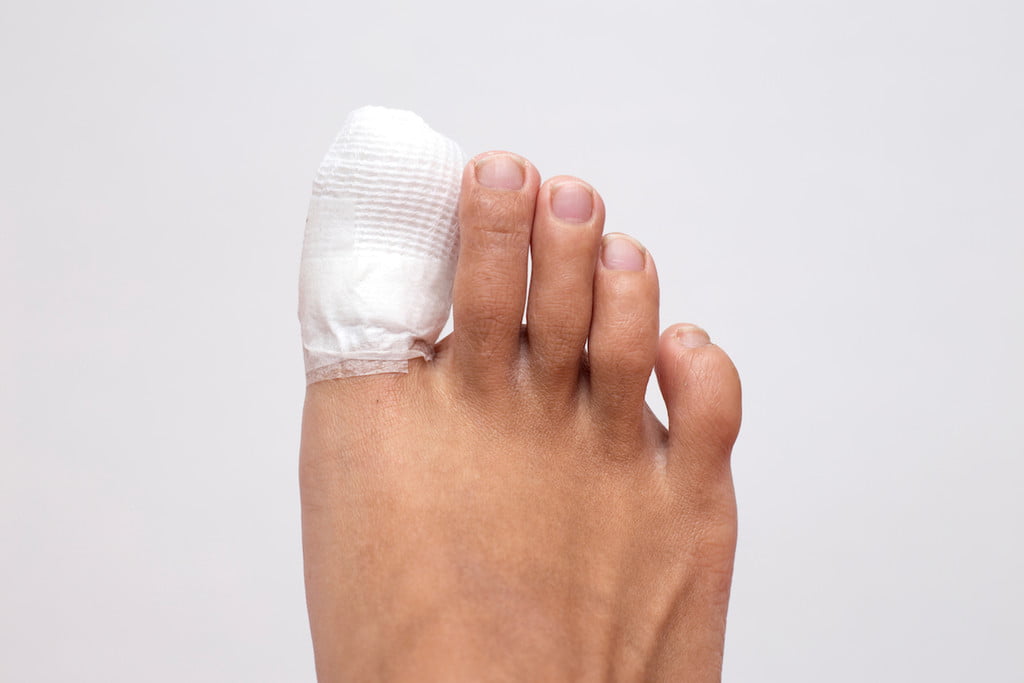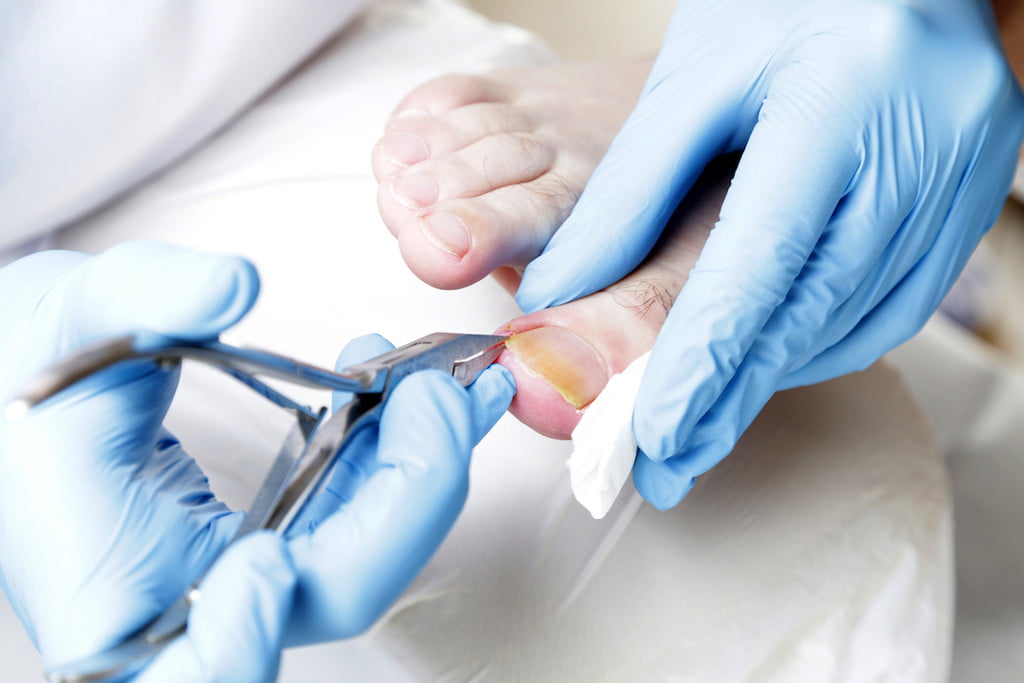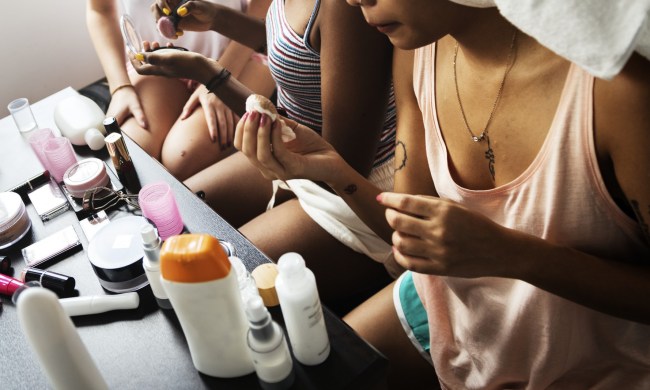If you’ve ever experienced an ingrown toenail before, you know they can be pretty painful. An ingrown toenail happens when the corner or edge of your toenail curves inward and grows into the surrounding skin around your toe (typically your big toe). In addition to being painful, ingrown toenails can cause redness and swelling in the area, making it painful to wear shoes or have anything rubbing against it.
Ingrown toenails are common in both men and women and can be diagnosed by your doctor after a physical examination of your nail and the surrounding skin. It’s important to treat them early so you don’t end up with a toenail infection. The good news is that it’s easy to learn how to fix an ingrown toenail, and most of the time, you can treat them in the comfort of your own home.

Home remedies
To start, soak your feet in warm water or apple cider vinegar for 15 to 20 minutes three to four times a day. This will help reduce swelling and tenderness. You can add Epsom salt as well to help reduce pain. Once your foot is done soaking, you can place waxed dental floss or a cotton pad underneath your toenail to help the nail begin to grow above the edge of the skin. These will have to be replaced every time you soak your foot, so keep them out by your tub or shower so you don’t forget.
You can also put a small amount of antibiotic cream on the toenail and bandage it. This will help prevent it from rubbing against your shoes or other surfaces, which can be painful. If you are able, pick open-toed shoes until your toe heals. If the pain persists, you can take over-the-counter pain relievers like Tylenol, Advil, or Aleve to help with pain management.
When to see your doctor
If your toenail hasn’t healed and it is still causing you pain after a week or so, call your doctor. At the office, they can actually lift the ingrowing nail edge and place cotton, dental floss, or a splint under it while it heals. Depending on the severity, your doctor may also partially remove the nail, especially if there is excessive redness, pain, and pus. Don’t worry, they’ll numb the area before doing so.

Ingrown nail prevention
The best preventative measure you can take to prevent ingrown nails is to wear comfortable shoes and socks that fit well. A shoe store can measure your foot and determine the correct size shoe you should be wearing. People who wear high heels a lot can also experience more ingrown nails because of toe crowding. You should also trim your toenails straight across, no shorter than the tip of your toe. If you get a lot of pedicures, make sure to go to an experienced technician so they don’t cause unnecessary damage.
You can also buy a toe protector, which offers a cushion between your toenail and your shoe. They are available as rings that fit around the ingrown nail or that cover the entire toe. Some will come with a medicated gel inside to help soften the nail and ease any pain you may be experiencing.
Most ingrown toenails aren’t serious and should improve within a week or so without major damage to your nail or surrounding area. Stay on top of in-home treatments and remember: Prevention is always the best medicine.



